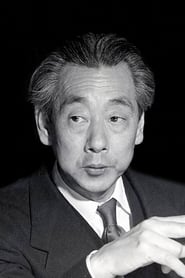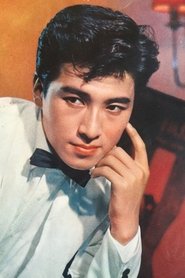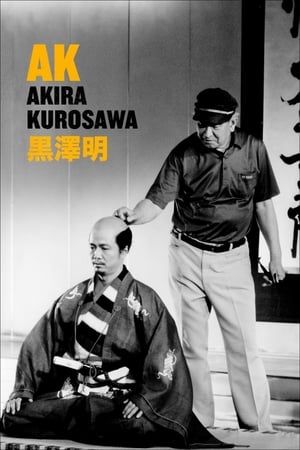
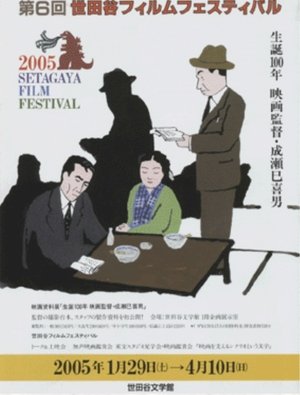
Mikio Naruse 100th Birth Anniversary(2005)
Because his style was similar to that of Yasujiro Ozu, who was already active at Shochiku, he moved to PCL (currently Toho) in 1933, where he appeared in the talkie works "My Wife, Like a Rose" and "Tsuruhachi Tsurujiro." It got attention. There were times when he was unable to make as many films as he wanted due to wartime film regulations and post-war Toho disputes, but in 1951 he revived his career with Meshi. Since then, he has released masterpieces one after another, including "Okaasan," "Lightning," "The Couple," "Wife," "Anii Mouto," "Sounds of the Mountain," and "Bangiku." The pinnacle of his work, "Floating Clouds," is Kenji Mizoguchi's "Wife." Even director Ozu was impressed, calling it a masterpiece of Japanese cinema, on par with "The Sisters of Gion." He depicted ordinary people in everyday life with an everyday realism that was not influenced by lyricism, and he consistently sought out women as his subjects.
Movie: Mikio Naruse 100th Birth Anniversary

生誕100年 映畫監督成瀨巳喜男展
HomePage
Overview
Because his style was similar to that of Yasujiro Ozu, who was already active at Shochiku, he moved to PCL (currently Toho) in 1933, where he appeared in the talkie works "My Wife, Like a Rose" and "Tsuruhachi Tsurujiro." It got attention. There were times when he was unable to make as many films as he wanted due to wartime film regulations and post-war Toho disputes, but in 1951 he revived his career with Meshi. Since then, he has released masterpieces one after another, including "Okaasan," "Lightning," "The Couple," "Wife," "Anii Mouto," "Sounds of the Mountain," and "Bangiku." The pinnacle of his work, "Floating Clouds," is Kenji Mizoguchi's "Wife." Even director Ozu was impressed, calling it a masterpiece of Japanese cinema, on par with "The Sisters of Gion." He depicted ordinary people in everyday life with an everyday realism that was not influenced by lyricism, and he consistently sought out women as his subjects.
Release Date
2005-01-01
Average
0
Rating:
0.0 startsTagline
Genres
Languages:
日本語Keywords
Similar Movies
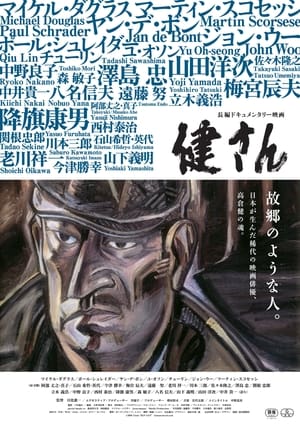 6.0
6.0Ken San(ja)
KEN SAN pieces together the puzzle of the life and legacy of Japan's mythical acting icon, Ken Takakura. Collaborators, friends and family tell intimate stories of Ken's journey: how one man of quiet dignity became a cultural barrier-breaking film star.
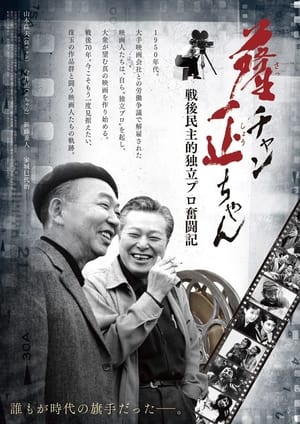 0.0
0.0Sat-chan Tadashi-chan: Sengo minshu-teki dokuritsu pro funtō-ki(ja)
After the war, many filmmakers were expelled from the Japanese film industry due to the Toho Dispute and the Red Purge. Amid such circumstances, there were people who set up their own independent production companies and embarked on film production without relying on corporations. This documentary film focuses on the passionate "spirit of film" of directors such as Satsuo Yamamoto and Tadashi Imai, who, despite many hardships, produced a succession of masterpieces overflowing with humanism and rebellious spirit.
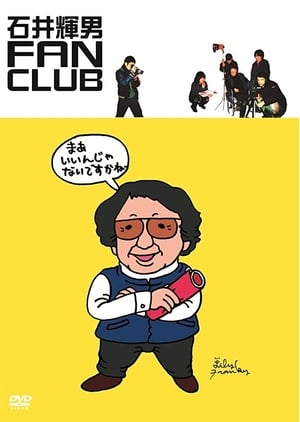 0.0
0.0Teruo Ishii Fan Club(ja)
A documentary on Teruo Ishii, the Japanese "King of Cult".
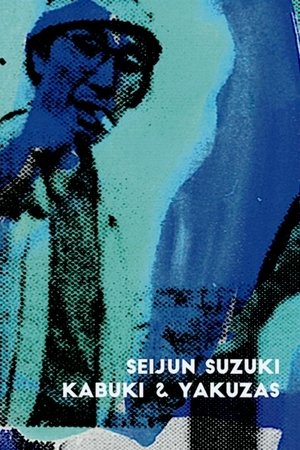 6.0
6.0Seijun Suzuki: kabuki & yakuzas(es)
Film director and screenwriter Seijun Suzuki (1923-2017), who in the sixties was the great innovator of Japanese cinema; and his collaborator, art director and screenwriter Takeo Kimura (1918-2010), recall how they made their great masterpieces about the Yakuza underworld for the Nikkatsu film company.
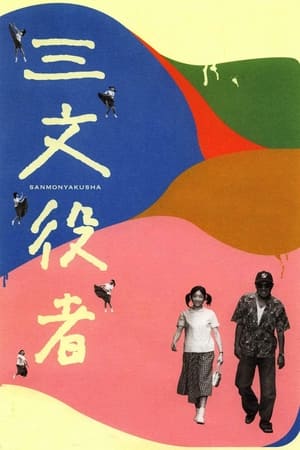 8.0
8.0By Player(ja)
The film is a series of vignettes from Taiji Tonoyama's life and film clips, interspersed with a dialogue to camera by Nobuko Otowa, addressing the camera as if she is addressing Tonoyama himself, recollecting events in his life. The film focuses on Tonoyama's alcohol dependence and his various sexual relationships, as well as his film work with Shindo.
 0.0
0.0Nezumikozo Jirokichi(ja)
Legendary anime director Rintaro’s (Metropolis, X/1999, Galaxy Express 999) first new work in over a decade depicts pioneering 1930s director Sadao Yamanaka and the production of his Nezumikozo Jirokichi. Despite dying before the age of 30, Yamanaka was a pivotal influence in Japanese cinema whose work would go on to inspire future generations. While most of his films have been lost to time, his scripts remain, and Nezumikozo Jirokichi recreates one of these lost films—a tale of a famous, virtuous bandit in old Edo—as imagined by Rintaro together with an all-star team including Katsuhiro Otomo (Akira, Memories), Taro Maki (Pluto, Millennium Actress) and Masao Maruyama (Ninja Scroll, Perfect Blue).
Red Shade(xx)
Keichi Tanaamis new animation work Red Shade (2021) is based on paintings that he had produced on the premise that they will be set in motion. Each of the 80 selected scenes was given a distinct movement of its own, and the edited version of the completed work became the first film. The 80 scenes are each independently complete, and can be freely rearranged. For example, you can start from scent 80 and end in scene one, or arrange them irregularly like 1, 4, 8, 7, and so on. In other words, the essence of the work does not change no matter how the scenes are arranged. Even so, it is possible to produce a strong impact by exchanging the images for each frame, and one can also for instance, create an impression of a refreshing breeze sweeping through the green meadows.
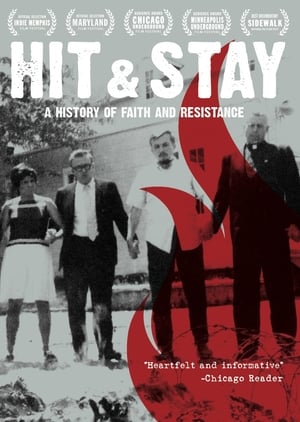 0.0
0.0Hit & Stay(en)
A feature-length documentary about priests and nuns who protested the Vietnam War by breaking into draft boards, destroying draft records, and then waiting around to be arrested. Their actions inspired a movement, which shaped the anti-war movement and helped bring an end to the draft.
In the Name of the People(de)
In this German film, inmates guilty of a prison murder are put on trial before a court consisting of other inmates. The trial is given the full formal treatment it might receive in a civilian setting. The key point in this film is that these are the actual murderers admitting their actual crimes before a judges' panel consisting of their peers: actual prisoners at the same institution. Having no force of law, the trial proceeds without reaching a conclusion. That is something the viewer is asked to provide. This movie won a Silver Bear from the 1974 Berlin Film Festival.
 7.1
7.1Violetta: Live in Concert(es)
"Violetta Live in Concert" is a high-quality show with a great 'mise-en-scène', choreography, costume design, light effects and incredible multimedia work.
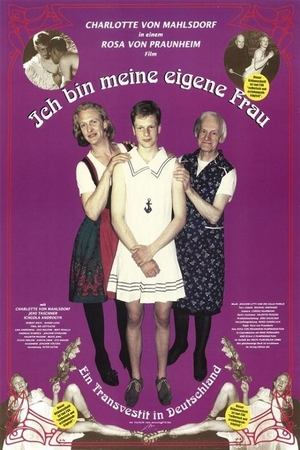 4.3
4.3I Am My Own Woman(de)
The life story of Charlotte von Mahlsdorf, who survived the Nazi reign as a trans woman and helped start the German gay liberation movement. Documentary with some dramatized scenes. Two actors play the young and middle aged Charlotte and she plays herself in the later years.
 6.3
6.3Football Under Cover(en)
David Asmmann's Football Under Cover documents the hard work involved in setting up an exhibition soccer match, known as a "friendly," between a German girls squad and Iranian women's team. In addition to showing how the two groups come from very different cultures, the documentary showcases what playing the game means to the members of both teams, and displays how passionate the fans of these two squads are.
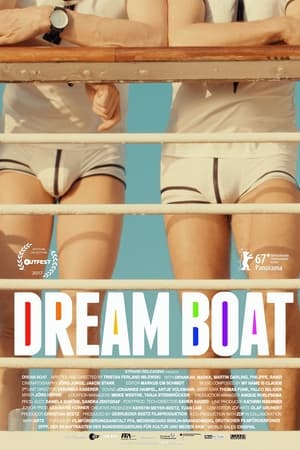 5.5
5.5Dream Boat(de)
A cruise ship and 3,000 men – it is a universe without heteros and women that usually remains a mystery to the outside world. Once a year the Dream Boat sets sail for a cruise exclusively for gay men where most passengers are united by the wish to live life authentically as themselves in a protected place.
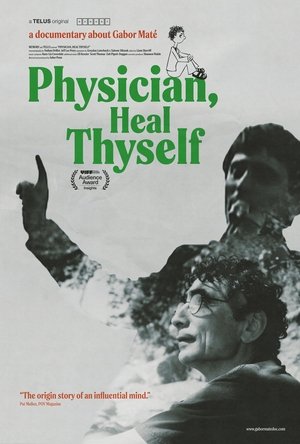 0.0
0.0Physician, Heal Thyself(en)
Dr Gabor Maté has become one of the world’s most influential thinkers about addiction, trauma and childhood development on the back of books like In the Realm of Hungry Ghosts, The Myth of Normal and When the Body Says No. He’s pioneered the idea of Compassionate Inquiry as a therapeutic approach, and worked for over a decade on Vancouver’s Downtown Eastside.
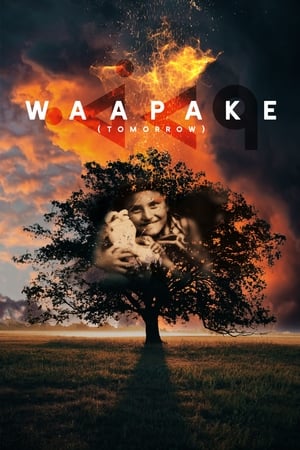 0.0
0.0WaaPaKe (Tomorrow)(en)
WaaPaKe is a story about resilience, love and transformation. Examined through an Indigenous lens, the stories of residential school Survivor-Warriors and their families offer an understanding of both intergenerational trauma and healing. We are taken to a studio set-up in front of a green screen. Through compassionate, candid conversations, Jules Koostatchin shares interviews with five individuals, family and friends, that all directly or indirectly experienced intergenerational trauma.
 0.0
0.0Life Is a Dream(en)
It's an incredible heartbreaking story of son Valentino Morales left alone by his father at 7 years old with 3 brothers and his Mother. Valentino decides to go the road between New York, Dominican Republic and Venezuela to find him.
 10.0
10.0Hyper: The Stevie Hyper D Story(en)
Darrell Austin, Stevie Hyper D's nephew, embarks on a journey through 90s London to explore his uncle's legacy. Through conversations with family, friends, and artists Stevie inspired, he pieces together the full story.
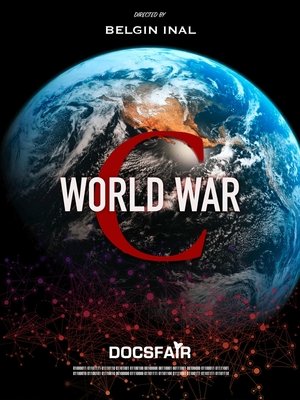 6.0
6.0World War C(nl)
It's war. War against an invisible enemy that is not as deadly as we are told. The world is changing rapidly. Disproportionate measures are taken worldwide that disrupt society as a whole. A dichotomy in society forced vaccinations and restrictions on freedom. Have we had the worst? Or is there something more disturbing to awaiting us.
